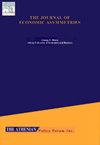公共债务的条件预测和门槛效应:来自南欧国家的证据
Q1 Economics, Econometrics and Finance
引用次数: 0
摘要
在本研究中,我们采用贝叶斯看似无关回归(SUR)模型对南欧国家中期(未来六年)的公共债务进行了有条件的预测。我们的预测包含多种宏观经济冲击,具体而言:(i)财政紧缩,体现在政府预算平衡的变化中;(ii)以美国GDP增长为代表的国际商业周期;(三)以全球油价波动为代表的能源成本冲击。采用不同的情景,结果表明,较低的预算赤字和较高的经济增长导致了最快的债务下降轨迹。研究结果还表明,当政府支出和收入分别低于GDP的40.9%和38.19%时,预算赤字上限的最佳水平为GDP的2.7%。有趣的是,国际商业周期在其中起着根本性的作用,因为当美国GDP增长高于3%时,南欧国家的经济增长对债务削减的压力更大。通货膨胀对债务的影响取决于能源成本,结果表明,当油价高时,通货膨胀可能导致更多的债务,但这种影响似乎是短期的。研究结果的主要政策含义是,债务的下行轨迹取决于可持续的财政限制和经济扩张。本文章由计算机程序翻译,如有差异,请以英文原文为准。
Conditional forecast for public debt and threshold effects: Evidence from South EU countries
In this study, we employ a Bayesian Seemingly Unrelated regression (SUR) model for the South EU countries to make a conditional forecast for the public debt in a medium term-horizon (six years ahead). Our forecast incorporates multiple macroeconomic shocks, specifically: (i) fiscal austerity, captured through changes in government budget balances; (ii) the international business cycle, proxied by US GDP growth; and (iii) energy cost shocks, proxied by fluctuations in global oil prices. Adopting various scenarios, the results show that lower budget deficit and higher economic growth lead to the fastest downward debt trajectory. The findings also suggest that the optimum level of budget deficit limit is 2.7 % of GDP and is achieved when government expenditures and revenue are lower than 40.9 % and 38.19 % respectively. Interestingly, the international business cycle plays a fundamental role, since economic growth of the South EU countries exerts even more pressure to debt reduction when US GDP growth is higher than 3 %. The effect of inflation on debt conditioned by energy cost, the results indicate that inflation may cause more debt when oil price is high, but this effect seems to be for a short-term period. The main policy implication from the results is that the downward trajectory of debt hinges on sustainable fiscal limits and economic expansion.
求助全文
通过发布文献求助,成功后即可免费获取论文全文。
去求助
来源期刊

Journal of Economic Asymmetries
Economics, Econometrics and Finance-Economics, Econometrics and Finance (all)
CiteScore
4.80
自引率
0.00%
发文量
42
审稿时长
50 days
 求助内容:
求助内容: 应助结果提醒方式:
应助结果提醒方式:


